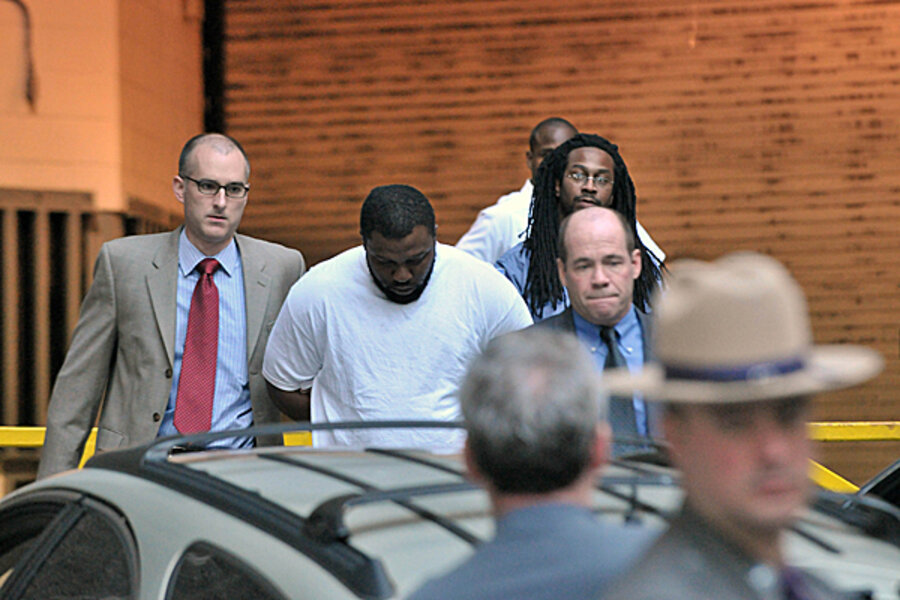New York terror trial likely to revolve around confidential informant
Loading...
| New York
To crack a terror group, the government often relies on confidential informants. Once an informant gains the trust of the plotters, the Federal Bureau of Investigation can track their every movement.
But when it comes to a trial of the plotters, the government’s informant is on trial as well.
On Tuesday, the jury-selection process began for four men accused of plotting to plant bombs outside a synagogue and to try to buy a surface-to-air missile to shoot down planes taking off from Stewart Air Force Base in New York.
But at the heart of the case will be a fifth man, a confidential informant, who had infiltrated the group and become deeply involved in their schemes. The defense is likely to spend most of its time trying to raise questions about the motives of the informant and claiming the government entrapped the defendants.
“You try to put the government on trial here,” says Stan Twardy, a former US attorney for Connecticut, now a partner at Day Pitney in Stamford, Conn. “You say to the jury, ‘The government witness was paid by the US government to do this, and you want to put my guys in jail.’ ”
Attacks against the informant, who has yet to be identified, may be the only defense for the four men. On May 19, 2009, the government arrested James Cromitie, David Williams, Onta Williams, and Laguerre Payen as they arrived outside a synagogue in the Bronx, allegedly with two improvised explosive devices (IED). According to the indictment, on May 6 the men had purchased the IEDs – which had been disabled by the FBI in advance – as well as a surface-to-air missile, also made inoperable by the FBI. As the men approached the synagogue, the FBI and New York Police Department rolled a tractor-trailer across the road to impede their escape.
“In an instance where the defendant is literally caught red-handed, often the defense strategy is to suggest some form of entrapment,” says Robert Mintz, a former federal prosecutor who is now head of white-collar and government investigations in Newark, N.J., at McCarter & English, a law firm.
The essence of the entrapment defense is to claim the government induced or persuaded the defendant to commit a crime he or she otherwise would not have committed, Mr. Mintz says. “The gray area is when there is a confidential informant in the mix, and he may be seen at various times as the person who is the motivating force behind the criminal conduct.”
The defense will also probably try to find out if the confidential informant has committed any crimes. According to an NPR report in February, the government was working on a new handbook that would prohibit the use of confidential informants who commit crimes. However, that handbook was not complete as of that time.
“The defense lawyers will want the jurors to say, ‘The guy the government got into bed with is worse than the person on trial,’” Mr. Twardy says. “The defense will say, ‘If you agree with that, make sure justice is done.’ ”
However, using squeaky-clean informants might handicap the government’s ability to crack important cases. “The individuals that prosecutors use are people who have committed crimes themselves, and it has given them credibility in the criminal world to gain the confidence of other would-be criminals,” says Mintz, who frequently used confidential informants to pursue organized-crime figures.
In the end, he says, the prosecutor will point to the evidence and argue that the defendants were inclined to commit the crimes and even may have discussed them before the informant called the authorities.
According to the legal documents, the plot was started after Mr. Cromitie told the informant that he was upset over the killing of Muslims in Pakistan and the war in Afghanistan. He said if he died a martyr, he would go to “paradise.”
Instead, if Cromitie and the other three defendants are found guilty, they face life in prison.





